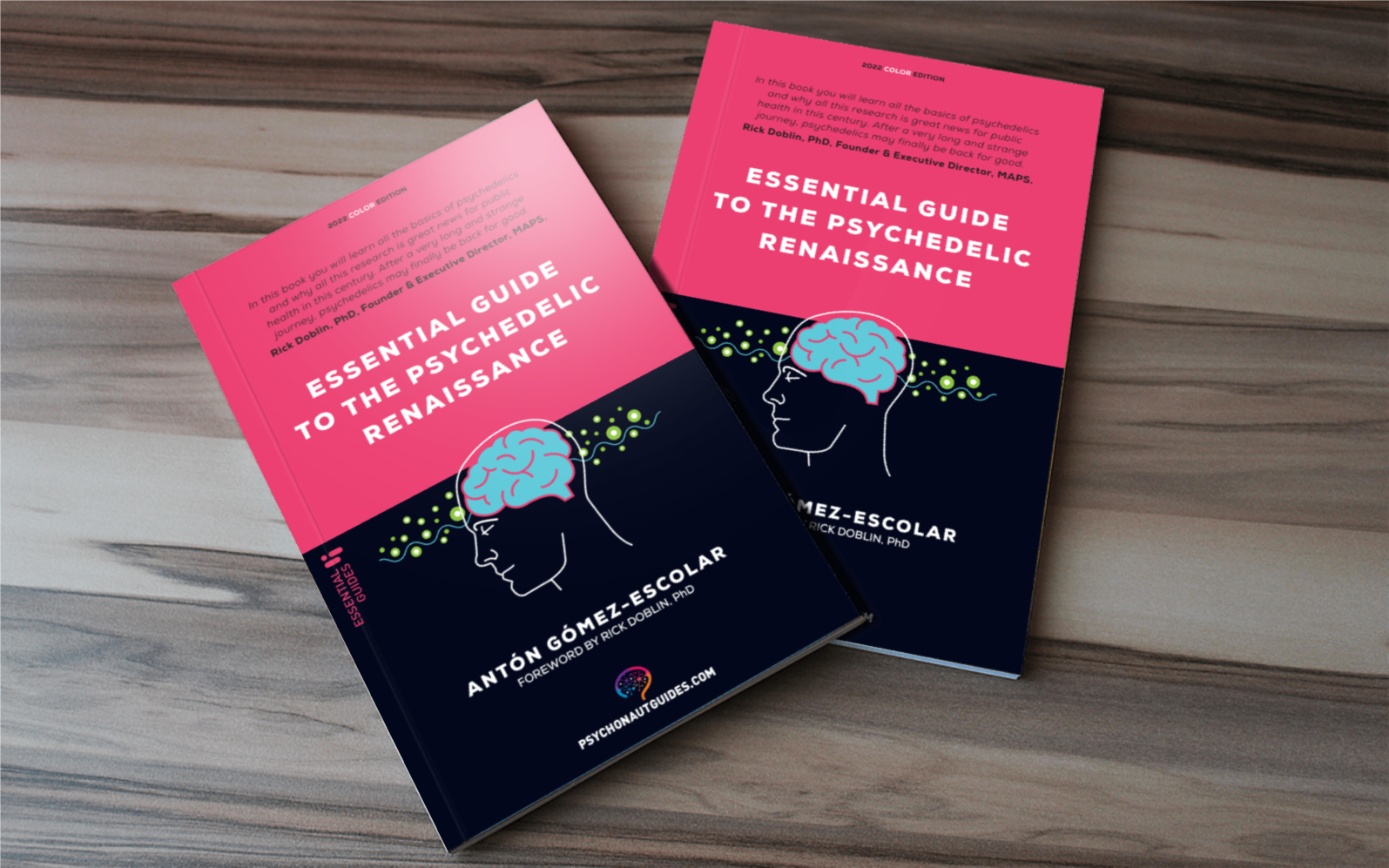By Gabriel García September 1, 2022
As Antón Gómez-Escolar tells us at the beginning of the second chapter of the Essential Guide to the Psychedelic Renaissance, “psychoactive substances are those that when introduced into the organism by any route (oral, nasal, intramuscular, intravenous) exert a direct effect on the Central Nervous System, causing specific changes to its functions (pain, mood, perceptions, etc), as for example do alcohol, caffeine, anxiolytics, antidepressants, some analgesics,. . and drugs.”
But what are drugs?
In his book Antón Gómez-Escolar states that, “if we were to ask anyone about the meaning of the word drug, they would most probably tell us that they are prohibited, addictive and harmful substances that are consumed for recreational or escape purposes, since that is how most people currently conceptualize these substances”.

However, beyond the ambiguous terms registered in the collective imagination and, sometimes repeated ad nauseam without a reflection of what they hide behind, if we stick to the definition provided by various agencies such as the Drug Agency of the Generalitat de Catalunya, “drugs are substances that, when introduced into the body, act on the central nervous system. This causes changes that can affect behavior, mood or perception”.
If we stick to this definition, which is the one widely accepted by the scientific community, as Antón Gómez-Escolar notes on page 43 of the Essential Guide to the Psychedelic Renaissance, “alcohol, caffeine, anxiolytics, antidepressants and some analgesics” are clearly drugs.
However, these latter items are not socially conceptualized as drugs, or at least not generally. Why are psychedelics socially considered as drugs?
As we have told on previous occasions on the web, when their use “outside the clinic or the laboratory” by the countercultural movements and against the Vietnam War (which made the U.S. government and various conservative sectors very uncomfortable), some media cases very overdimensioned by the sensationalist press, together with the lack of knowledge about their neurological functioning and long-term consequences, and various mass media campaigns, led the government of the time to ban them at the federal level in 1968 and shortly afterwards at the international level, initiating the famous “war on drugs” and putting an end to a prolific era of very promising clinical research. Years later, history would repeat itself with MDMA (“ecstasy”) with a very similar script, and would put an end to a substance of enormous clinical potential after its prohibition in 1985 despite the opposition of a large part of the scientific community and its (re)discovery and “sponsorship” by Alexander “Sasha” Shulgin & Ann Shulguin.
To the question, are psychedelics drugs? The answer is yes from a scientific point of view, and they can become so from a social point of view if they are not consumed responsibly, as is the case with many other substances such as those already mentioned in this article. However, this stigma to which psychedelics are subjected was of circumstantial origin and, even so, it is a burden that this type of substance must bear in order to gain public approval. Only through education and outreach will psychedelics gradually begin to find the place they deserve in a society that needs all possible tools to improve deteriorating mental health.

You can read more information about psychedelics in the Essential Guide to the Psychedelic Renaissance, by Antón Gómez-Escolar. We also recommend Psychedelics and Mental Health, by Irene de Caso and Your Brain on Psychedelics, by Genís Oña, where you will learn the keys to the effects of psychedelics, capable of producing significant changes in the processes of perception, thought and consciousness. The book also includes a prologue written by one of the greatest eminences in this field, José Carlos Bouso, scientific director of ICEERS.
The book, like the rest of the Psychonaut’s Guide series, is now available on Amazon in physical and eBook format, as well as Apple Books. In addition, all titles are available in Spanish version on GuiasdelPsiconauta.com




